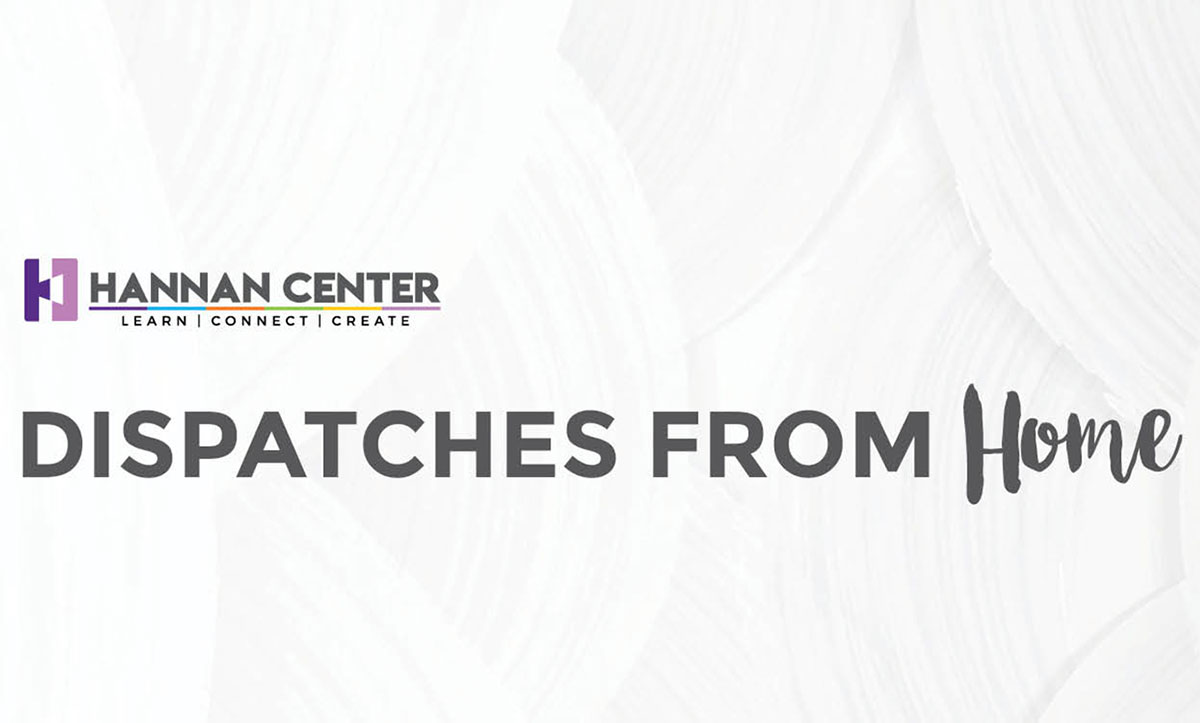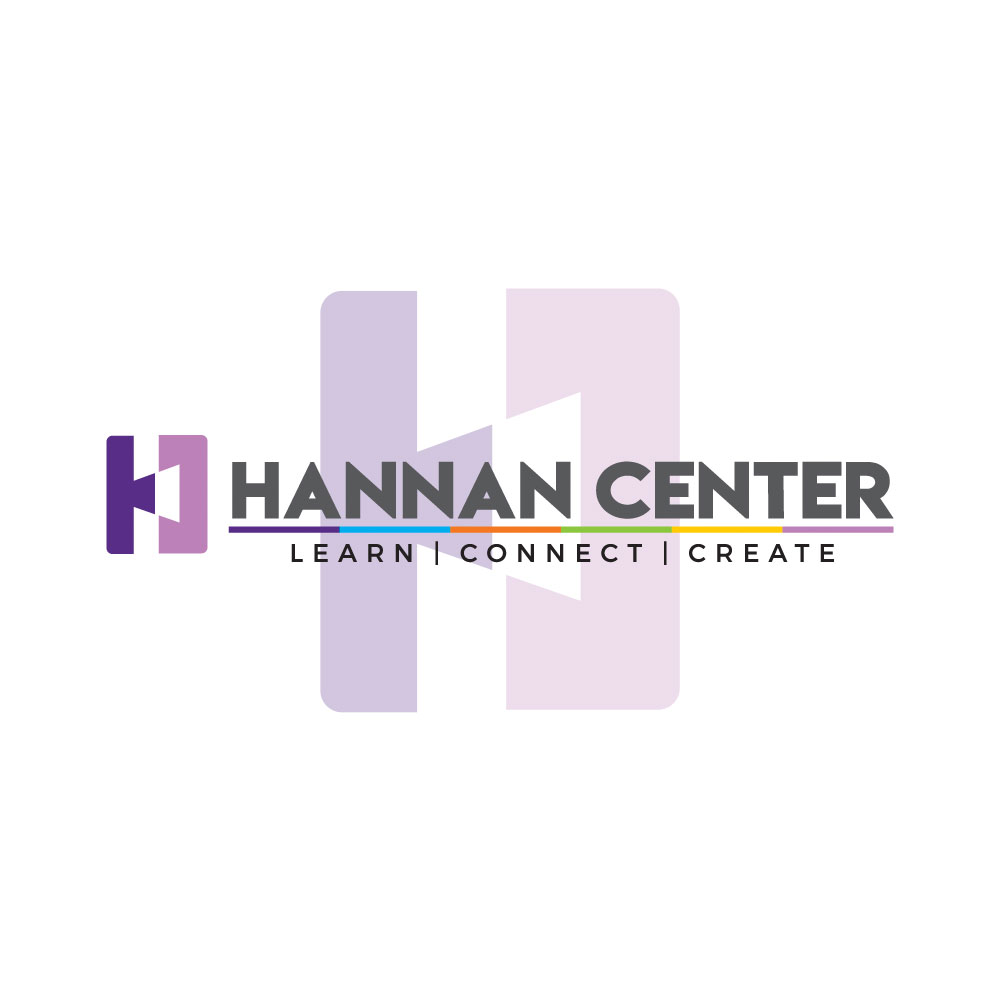The Hannan Center Director of Arts and Culture Richard Reeves recently sat down and did a Zoom interview with artist Ira Russell. Have a look!
The Hannan Center Director of Arts and Culture Richard Reeves recently sat down and did a Zoom interview with artist Rosemary Summers. Have a look!
The Hannan Center Director of Arts and Culture Richard Reeves recently sat down and did a Zoom interview with artist Carol Cook Reid. Have a look!
Karolen Coleman
Executive Assistant
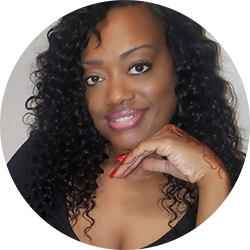 How are you doing? Are you finding ways to maintain your sanity and have fun during this time of quarantine? How’s your physical and mental health? I’ll admit it – after several weeks of social distancing, it’s becoming a little difficult to come up with positive, fun and healthy ideas to occupy my mind.
How are you doing? Are you finding ways to maintain your sanity and have fun during this time of quarantine? How’s your physical and mental health? I’ll admit it – after several weeks of social distancing, it’s becoming a little difficult to come up with positive, fun and healthy ideas to occupy my mind.
While journaling, I created a list of some things that are helping my mental and physical well-being; I thought I’d share them. Hopefully, some of these ideas will help you also.
Writing or Journaling
Writing is inspiring and healing. Each time something moves you and causes you to smile, jot it down. Bullet journaling will make things easier if you’re not sure where to begin. Do this by writing down single words or phrases that come to mind – perhaps list your favorite things, or places to travel. You’ll elaborate on some of the ideas as you’re writing them. Some you will refer back to when a more intentional idea hits you.
Create Mood Boards or Vision Boards
Tap into your creativity by creating artistic layouts of your moods, thoughts and ideas. These are often called mood boards. I have created mood boards that reflect my favorite colors, hobbies and my zodiac sign.
Create a vision board, which is a tangible way to manifest your desires. Collect pictures and phrases cut from magazines, old books and catalogs of various things you want to come to fruition in your life. Affix these cut-outs onto a large poster board or even in a scrapbook. Utilize different themes such as goals for learning something new, cultivating a healthy lifestyle or other personal development and relationship goals.
Playtime – Revisit Pastimes and Hobbies from your Childhood
It’s important to take out time from adulting to play and recollect the carefree times of your childhood – transporting your mind to a happy place. My playtime go-tos are coloring, hula hooping, and playing jacks.
There are many adult coloring books that have been published lately. By searching Amazon.com or any bookseller, you’ll find many themes including mandalas, religion, beauty, and even swear/curse words. There are themes to satisfy everyone. Word finds, crossword puzzles and card games are other mindful things to do alone.
Music Therapy
Put a song in your heart and sing it aloud. Hear it as you move about the day. Make it your theme song. Choose music that transforms you to a fantastic memory, a time where you were surrounded by people you love and you were dancing and having the time of your life. Play the song and dance along. Listen to music that moves you physically – dance wildly in the mirror. Perhaps choose spiritual or worship music that moves your spirit.
There are many DJs playing musical sets on Facebook, YouTube and Instagram. Follow D Nice on Instagram at instagram.com/dnice. He hosts several sets per week and plays feel good music from many genres and eras.
We will be on the other side of this pandemic soon. Let’s do what we can to make sure that we come out of it even better than we were before. We got this!
All the best,
Karolen
My COVID-19 Survival Toolbox
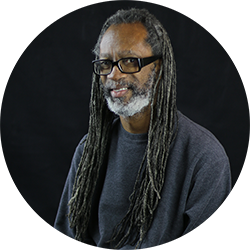 Richard Reeves, Jr.
Richard Reeves, Jr.
Director of Arts and Culture
I am an artist. I have created art since my schooldays, in graphite, pastel and watercolor, and as a photographer and videographer. All along I have sought out and been open to new forms of artistic expression, especially involving new technology. I work at my art and enjoy my work. I also am a serious collector. With my husband Michael, I have acquired visual artworks in the broadest range of media—and in numbers that defy us to cover every last square inch of our wall space at home. Art can be uplifting, thought provoking, strange, enraging, alarming, frightening or just plain beautiful. My appreciation of art and of the community of working artists has always helped both to ground me and to nurture my growth as a person. So it is no wonder that, with the world now in quarantine, my survival toolbox relies so hugely on this highest of human endeavors and liveliest of human associations.
Like an extended family, the arts in Detroit give me the support, safety, and sanity to keep going at what I do. But the strangeness of the “new normal” and the urgent but unanswered questions that loom over everything have steered my art in directions I might not have taken before.
Here’s an example. At this time, Hannan Center is offering two six-week online art courses, each meeting for 60 minutes once a week. They are Art and Design 101 and Fine Arts. Art and Design 101 is led by artist/instructor Nancy Wolfe and meets on Thursdays at 10:30 a.m. This course is perfect for artists of all abilities. It incorporates practice in basic art design with art philosophy. Nancy usually ends each class with a poem.
Fine Arts meets on Fridays at 12:30 p.m. and also is accessible to artists of all skill levels. This class is lead by longtime Hannan art instructor Jim Puntigam. Jim maintains a cool, comfortable vibe in his classes. He introduces and leads students in basic to advanced techniques, and helps each participant to discover the unique fine artist within.
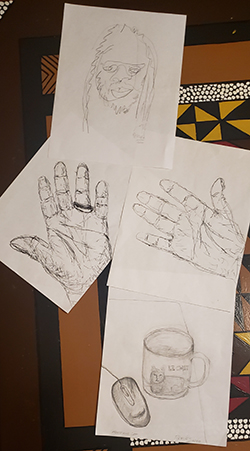 As Hannan’s director of Arts and Culture, I enjoy sitting in on our art classes and producing new work along with our students. This post includes photos of some of the work that I was inspired to create while participating in pilot sessions of these two new virtual courses, as well as some examples of my latest photography.
As Hannan’s director of Arts and Culture, I enjoy sitting in on our art classes and producing new work along with our students. This post includes photos of some of the work that I was inspired to create while participating in pilot sessions of these two new virtual courses, as well as some examples of my latest photography.
Also in my survival toolbox, and broadening my view and practice of art, are my Facebook art groups. Two of my favorites are “Detroit Fine Arts Breakfast Club” and “Art in the Time of Corona-V.”
The Detroit Fine Arts Breakfast Club is a weekly meeting of artists and collectors, most of whom reside in the Detroit Metro area but who include members based around the country and world. There is no fee to join. The DFABC gives artists a place to show their work, learn from each other and from experts in the business of art, and gain valuable exposure to many of Detroit’s most influential collectors and gallerists. Until recently its regular meetings were held on Mondays from 5 to 7:30 p.m. at a restaurant, Noni’s Sherwood Grill, on Livernois Avenue in Detroit. Yes, the Breakfast Club meets at dinner time!
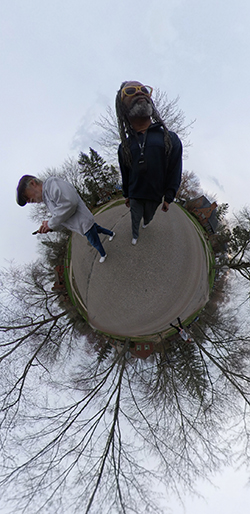
Now the DFABC meets online via Zoom, each week at the same time. The meeting format is mostly the same as when we met in person. It starts with an introduction of all new participants; then members are invited to make announcements of upcoming arts events and exhibits; and, finally, artists with new work to show have two minutes each to present up to two pieces and discuss them. “Show and Tell” is the most exciting part of the meeting, as much of the art sells on the spot to interested collectors or is traded between artists. One tradition we have had to drop for the time being is the in-person raffle of an original work contributed by a different member each week and won by someone present for the five-dollar price of a ticket.
The live meetings of the DFABC are augmented by the ongoing forum of artists and collectors who share their pictures, news and commentary about art on the Club’s Facebook page.
“Art in the Time of Corona-V” is a new Facebook group for artists and lovers of art. It was created as a virtual gallery where artists can react to and comment on the coronavirus pandemic through their art. The page posts many topics to explore through art, like self portrait, studio visit, sketchbook Sundays, still life, collaboration, printmaking and many more. This group is made up of artists from all over the world but is heavily supported and utilized by working Detroit artists and Detroit art lovers.
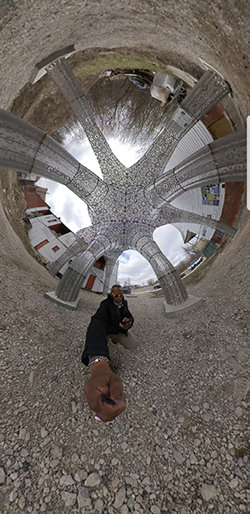 So my art is helping me get through this and, in a way, I am helping my art get through this too.
So my art is helping me get through this and, in a way, I am helping my art get through this too.
When I simply want to put down my pencils and brushes and camera, and relieve stress by indulging in the pure enjoyment of art, I take virtual tours. Many museums and art galleries around the world have placed works from their collections online. Some of my favorites are highlighted below.
My advice as to what to include in your own COVID-19 survival toolbox is anything that makes you happy and keeps you safe. There are many support groups available online; and Zoom and virtual meeting services are a great way to social distance but still connect.
If you need assistance connecting with any of the resources I mentioned, drop me an email at [email protected].
All the best,
Richard
VIRTUAL ART RESOURCES
By Melissa Draughn, LMSW, Director of Social Work
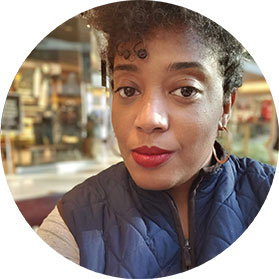 I have been diagnosed with two autoimmune disorders, hyperthyroidism and Multiple Sclerosis. It has been a long, difficult journey that ultimately taught me to be more mindful of my health. I won’t say I have been perfect about it but I have definitely become more careful and consistent. I also had to adapt to a new normal. And so of course, when I had just reached my best level of health maintenance, a pandemic happened. I was forced yet again to adapt to a new normal.
I have been diagnosed with two autoimmune disorders, hyperthyroidism and Multiple Sclerosis. It has been a long, difficult journey that ultimately taught me to be more mindful of my health. I won’t say I have been perfect about it but I have definitely become more careful and consistent. I also had to adapt to a new normal. And so of course, when I had just reached my best level of health maintenance, a pandemic happened. I was forced yet again to adapt to a new normal.
A big part of my new normal has been to severely limit my in-person social interactions. As a social worker and member of a fairly large family, I was accustomed to being around people, but I didn’t realize it until it became unwise to do so. The hardest adjustment was ceasing my weekly visits with my grandmother and parents. My grandmother is 92 years old and my parents, who are also her main caregivers, are in their mid-60s. We are in two different high-risk populations and the way I could show I cared was to stop physically showing up. We do however maintain contact by phone on a regular basis and the occasional video chat. It has been enough so far.
With the subtraction of face-to-face social interactions came the addition of increased fear. Fear has perhaps been the biggest obstacle during this time. Every sneeze was followed by a ‘what if’. It took me two weeks to leave the apartment for anything. I spent those two weeks distracting myself with work and streaming services. This phase, however, wasn’t sustainable. I am far from an extrovert or an outdoors person, but the first walk I took in the driveway greatly improved my mood and motivation.
As the fear lessened, I was able to absorb the facts. People, such as myself, taking disease-modifying treatments are more at risk for severe illness should we become infected with COVID-19. The stakes are higher but taking the necessary precautions, such as social distancing, increased hand washing and cleaning frequently used surfaces is still the best game plan. I was already doing some of these actions, but I am now more mindful of their importance. I also continue to take my medication as prescribed and will only make changes after speaking with my specialist.
The source of your information is also an important factor in managing fear. It is easy to become overwhelmed with multiple and conflicting pieces of information. I rely on updates from the Centers for Disease Control and Prevention (CDC) or trusted organizations such as the American Autoimmune Related Diseases Association (AARDA) for guidelines and recommendations rather than word of mouth. There are also different national societies for different diseases such as The National MS Society and National Lupus Resource Center that might be more helpful if you are looking to be more specific. Finally, I check in with my family members on a regular basis so that they know I’m okay. I find that it’s important to do this because it’s not just my fear that matters.
In closing, I want to remind you that our Zena Baum Senior Center hotline is available Monday through Friday from 9am – 5pm to help connect you with the resources you may need or to just lend a listening ear. You can find the phone number and email address below.
Be well,
Melissa
By Corey Achambault
AmeriCorps Program Director
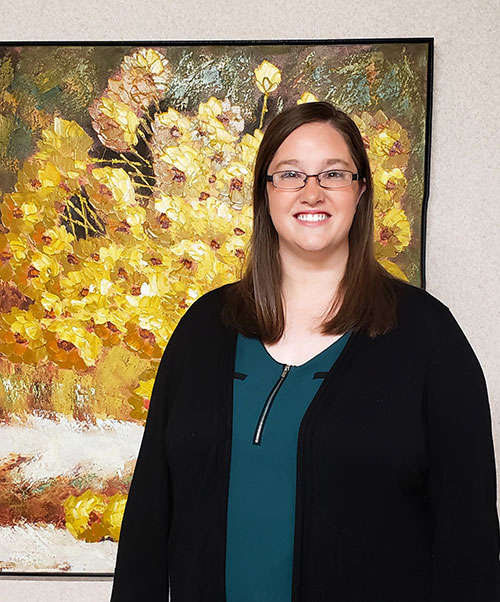 Full disclosure: I am, in fact, a Millennial. Born between the early 1980s and mid-1990s, I grew up watching cable TV, am skilled with a smartphone, and have no real memories of a time before the internet. I’m also an avid reader, love dogs, and consider volunteering to be my favorite hobby. Even though I may sometimes act like I know more than I do, when it comes to COVID-19, I’m paying close attention to those who know more than me and following the recommendations laid out by the CDC and State of Michigan.
Full disclosure: I am, in fact, a Millennial. Born between the early 1980s and mid-1990s, I grew up watching cable TV, am skilled with a smartphone, and have no real memories of a time before the internet. I’m also an avid reader, love dogs, and consider volunteering to be my favorite hobby. Even though I may sometimes act like I know more than I do, when it comes to COVID-19, I’m paying close attention to those who know more than me and following the recommendations laid out by the CDC and State of Michigan.
As such, it really gets my goat when I read articles or social media posts criticizing Millennials for traveling to exotic spring break locations. Frankly, the last time I went to a beach for spring break was over ten years ago! And while I, too, may find myself being a little critical of those who travel for recreation right now, I think it is important at this time that we suspend assumptions and avoid mislabeling behaviors or giving in to gross overgeneralizations.
One stereotype about Millennials is that we try to make everything about ourselves and I promise that is not my intention with this note. I only share this experience to let you know that I get it – people have a lot to say about other generations, and all too often, it’s negative or misplaced, and it’s usually directed at either my generation or yours.
While logging onto social media, I often see sarcastic posts that end with “okay boomer” and an eyeroll emoji. Typically, my policy is to ignore the post and keep scrolling in search of content that is more interesting, more relevant, or, if I’m lucky, includes a dog video. However, I cannot take this same passive approach when I see an extension of this “joke” in posts now referring to COVID-19 as #BoomerRemover. It baffles me that people think this is humorous or okay. It is not.
If we stick to the facts, then yes, COVID-19 disproportionately presents serious, life-threatening symptoms in older adults. However, these symptoms are not exclusive to aging populations and can affect anybody, regardless of age. Furthermore, #BoomerRemover fails to account for the sum of the human experience. Now is a time for our community to come together and support each other, not reinforce divides or prejudices, passing them off as “harmless” humor. My generation is still getting our lives together and we need you to continue showing us the ropes! I need my aging family and friends in my life. They matter to me. You matter to me. You matter.
So here are some of the ways I’m supporting the older adults in my life at this time:
- Staying home to the fullest extent possible
- Promoting social media content that is actually humorous and educating those who post insensitive material
- Checking in regularly with the important people in my life
- Talking others through using grocery delivery services and apps that link library cards to eReaders or tablets
- Preparing a meal for neighbors diagnosed with COVID-19 and sharing via porch drop-off
Our world is about to change and nobody knows what it is going to look like. But if we come together and support one another through this time, then our community will come out that much stronger. It’s my hope that we can close the gap between our generations and find mutual understanding and respect that extends well beyond COVID-19.
Sincerely,
Corey
By Tara Franey, Director of Development
Hello from my new “office” – my dining room table! I set up shop here last Wednesday and given yesterday’s announcement from Governor Whitmer, it looks like I’m going to be here for a while… The only one happy about this situation is my little chihuahua, Chili.
We are certainly in unprecedented times. I’m struck by how quickly this has all transpired and reminded how much of life is out of our control.
Beyond the upheaval this has caused to everyday life, I know that it must be surfacing uncomfortable issues for many people. For me, my health anxiety is in overdrive. While I’ve always had a bit of health anxiety, it became a major issue in my life about twenty years ago when my dad fell extremely ill out of nowhere and I was newly pregnant with my son. I gave birth to my son on the 3rd floor of St. Joe’s while my dad was in the rehab unit on the first floor after an eight-month battle for his life.
Although I managed to keep up appearances, I was in a very bad place mentally. Thankfully, I found a wonderful therapist and a group of people also living with health anxiety who helped me through. I will forever be grateful to those individuals who shared their own challenges and coping skills.
Over the years I’ve been much better, but COVID-19 has me rattled. I mean, it has even the most relaxed people a little worried! I’m doing my best to be rational, but it’s hard. I’m following all the precautions and finding peace in that. Let’s just say my hands are a little dry from all the washing and hand sanitizer. My daily date with my new boyfriend, NY Governor Andrew Cuomo, also helps. His morning briefings reassure me that we’re all going to be okay and probably even stronger when this is over.
I know I’m not the only one feeling challenged during this time. My issue is health anxiety, but there are so many things people are dealing with. Depression, isolation, financial insecurity. I hope you can reach out to your network and find the help and support you need.
Please don’t forget that Hannan Center is here for the older adult community and their caregivers. Our Zena Baum Senior Center Hotline is still available Monday – Friday from 9am – 5pm and our social workers can provide assistance. All calls are confidential. Reach out if you need help or just someone to chat with. We’re all in this together – don’t go it alone.
Can’t wait to be back in my real office at Hannan Center soon. Until then, it’s the dining room table and social distancing for me!
Be well!
Tara
By Seema Verma – Administrator, U.S. Centers for Medicare & Medicaid Services
Since older Americans are particularly vulnerable to coronavirus (COVID-19), I wanted to let you know the steps we’re taking to help our Medicare beneficiaries cope with the pandemic.
We’re warning Medicare beneficiaries that scammers may try to use this emergency to steal their Medicare number, banking information, or other personal data.
Unfortunately, scammers come out of the woodwork during times of uncertainty and change. So make sure you give your Medicare number only to your doctor, pharmacist, hospital, health insurer, or other trusted healthcare provider.
If someone calls you on the phone, says they’re from Medicare, and asks for your Medicare number or other personal information – just hang up.
Remember: Medicare never calls its beneficiaries to ask for or to “verify” Medicare numbers.
My agency finished removing Social Security numbers from all Medicare cards last year in order to reduce fraud and protect Medicare beneficiaries from identity theft. Even with this change, you should guard your Medicare card. Treat it like a credit card. Be sure to check your Medicare claim summaries for errors and questionable bills.
If you suspect Medicare fraud, please report it by calling Medicare’s toll-free customer service center at 1-800-MEDICARE (1-800-633-4227), or by visiting www.medicare.gov/fraud.
I also want to inform you what Medicare covers with regard to coronavirus.
If your doctor orders a COVID-19 test for you, Medicare covers all of the costs. You should not have any cost-sharing.
Medicare also covers all medically necessary hospitalizations. This includes extra days in the hospital for in-patients who were on the verge of being discharged, but were diagnosed with COVID-19 and had to stay longer under quarantine.
There’s no vaccine for COVID-19 at this time. However, if one becomes available, Medicare will cover it.
If you have a Medicare Advantage Plan, you have the same benefits as people with Original Medicare. Medicare Advantage plans are now required to have the same cost-sharing for COVID-19 lab tests as Original Medicare: zero.
Medicare also recently expanded its coverage of telehealth services to enable beneficiaries across the country to receive a wider range of healthcare services from doctors without having to travel to a healthcare facility.
These changes allow beneficiaries to communicate with their doctors without having to physically go to a healthcare facility, thus cutting their risk of acquiring or spreading the virus. And frontline clinicians will be better able to stay safe themselves while treating people with Medicare.
Doctors, nurse practitioners, clinical psychologists, and licensed clinical social workers can deliver telehealth services via phone and video chat. Medicare beneficiaries can receive telehealth services in their home as well as in any healthcare facility, including a physician’s office, hospital, nursing home, or rural health clinic.
Telehealth services include routine office visits, mental health counseling, and preventive health screenings for cancer and other illnesses.
By helping healthcare institutions across the nation offer medical services remotely, telehealth helps free up hospital emergency departments and doctors’ offices to deal with the most urgent COVID-19 cases. For example, you can talk with a doctor about your diabetes management or prescription refill without having to go to his or her office.
During this emergency, Medicare will pay for telehealth services at the same rates as in-person services, giving doctors and other clinicians an incentive to use this alternative and reserve their offices to treat those who truly require in-person care.
We know many Medicare beneficiaries are concerned about the spread of coronavirus and the threat it poses to their well-being. That’s why we’ve taken these rapid steps to ensure that the Medicare program continues to protect our beneficiaries while maintaining trusted access to care in these uncertain times.
For the third time in as many months, I took my mom out to enjoy a live show. The first show was at Detroit’s Masonic Temple, the second at the new Little Caesar’s Arena (LCA), and the third one was at Flint’s Capitol Theatre. Constructed in the 1920s, the Masonic Temple and the Capitol Theatre are reminders of an age when cities erected large, performing arts venues themed after grand, European architecture styles. The LCA, built only a few years ago, boasts an innovative, modern design with many amenities. While all three have aesthetics one might appreciate, they pose logistical challenges for older people and those with disabilities.
In her nineties, my mom is in excellent health. However, I’ve noticed that over the last few years, she has started to walk slower and is a little less steady on her feet. Planning accordingly, I arrived early at each venue to give us time to get settled. However, in each instance, I found limited accessibility options for people who have mobility challenges.
For instance, the event at the Masonic Temple indicated that doors opened at 7:00 pm. In reality, the auditorium didn’t allow patrons to enter until 7:30 (the event started at 8:00), and people stood in the cold waiting to get inside. After getting inside the lobby, there was another 30-minute wait before they allowed people to enter the auditorium. With few places to sit, my mom stood an hour before she could rest. I noticed others with canes and walkers also standing.
Built before the passage of the Americans with Disabilities Act (ADA), the Masonic Temple is not an age-friendly venue. Once inside of the theater, there were other barriers – such as low lighting that did not illuminate the sloped floors, uneven carpeting, and narrow spaces between rows that required you to sidle sideways to squeeze by already seated patrons.
On the other hand, the LCA is ADA compliant, but it still posed some accessibility challenges. For instance, it is not possible to drop someone off near the entrance because of the traffic barriers that the city has installed to keep the Q-line free of congestion. The closest parking garage (which costs $30!) connects to the LCA, but it is a long walk for anyone, let alone someone who needs accommodations.
Once inside the arena, you can move between floors on an elevator, but steep stairs to the stadium seating were another obstacle to navigate. Flint’s Capitol Theatre also had accessibility barriers – no elevator to access the balcony, and steep stairs to descend to get to seating.
Typically, I wouldn’t have thought twice about these issues, but having my mother with me caused me to be hyper-aware. While some of the concerns that I raise may be unavoidable (e.g., stadium stairs), I still wondered whether more could have been done to improve accessibility. These experiences also made me realize my own privilege. Other than the recovery period after my knee surgery, I’ve never worried about accessibility issues. Walking too far or standing for long periods isn’t an issue for me right now, but one day that may change.
Given that in just a few years, our senior population will swell to where there are more people who are 60 years and older than those who are under 18, developers, city planners, and other decision-makers must think about how to make communities work well for people from the ages of two to 92. If they don’t, there will be a lot of us on the outside who are looking in.
– By Vincent Tilford, Executive Director


